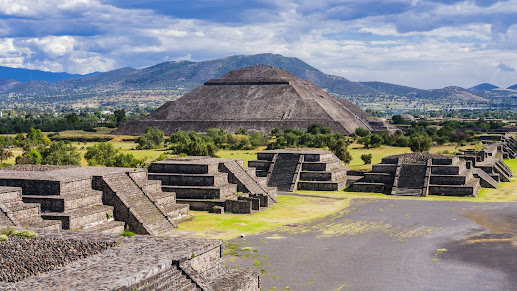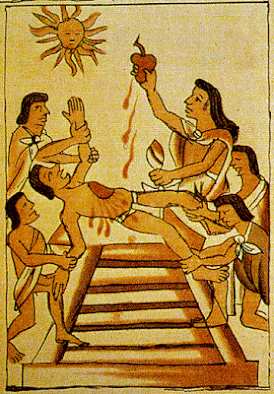MAYAN CIVILIZATION (PART 2): ARTS, LIVING & FOOD STYLE
MAYAN CIVILIZATION (PART 2): ARTS, LIVING & FOOD STYLE
Arts
During that time the Maya created many works of art. The art of the Maya was heavily influenced by their religion. Their artwork was always centred around the Maya kings who wanted to make sure they were remembered throughout history.
Stone sculptures
The Maya are perhaps most famous for their work in stone. The Maya also developed an elaborate and beautiful tradition of sculpture and relief carving. Architectural works and stone inscriptions and reliefs are the chief sources of knowledge about the early Maya.
One popular type of Maya sculpture was the stela. A stela was a large tall stone slab covered with carvings and writing.
"One popular type of Maya sculpture was the stela. A stela was a large tall stone slab covered with carvings and writing."
Carvings
The Maya created detailed carvings in materials such as wood and jade. The Maya painted murals on the walls of their buildings including their houses, temples, and public buildings.
Ceramics & Pottery
Maya ceramics are an important art form. The Maya created their pottery without the use of a potter's wheel! They decorated their pottery with elaborate designs and scenes. These tell us a lot about life in that period.
Weaving & Clothing
No clothing from the Maya period has been found.But Archeologists can tell through the paintings, writings, and carvings the type of clothes that the Maya created. Clothing for the nobles was truly an art form. The nobles wore decorated clothing and huge headdresses made from feathers. Men and women wore different types of clothes.
The Maya wove the fabric for their clothing from cotton, hemp, and bark fibers.
Jewellery
The Maya were especially well-known for wearing lots of jewelry. Earrings, nose rings, lip rings, necklaces, pins and more were all considered fashionable. The poor wore jewelry made of bone, sticks or painted clay. The rich showed their social status with jewelry made of gold, silver, copper, turtle shell, and gemstones. Carved jade was especially popular. It’s green color represented life and growth to the Maya.
Writing
The Maya made paper from the inner bark of wild fig trees and wrote their hieroglyphs on books made from this paper. Those books are called codices. The writing uses a number of symbols and pictures and the books can be considered delicate works of art.
Music and Dance
The Maya loved music. It was such an important part of their culture that musicians were given a lot of respect. Musicians performed at almost all Maya ceremonies. Music was an important part of events like birth, funerals, victories and Maya ball games. Musical instruments like Drums, rattles of turtle shells and pottery flutes were their main instruments.
The Maya loved dance. Many of their numerous religious festivals included great costumes and lots and lots of dancing. Some scholars believe the Maya had over a thousand different dances. Their dances included the Monkey, the Grandfather, the Shadow of the Trees, and the Centipede. Usually, the men and women danced separately. Dance costumes were colorful, and headdresses were huge!
Architecture
Mayan buildings are most dramatic and the most easily recognizable creations of the Maya people are the step pyramids of the Terminal Preclassical Maya period.
They built many large structures in every city. These included geometric structures like pyramids, palaces and temples. The Maya utilized geometric proportions and intricate carving to build everything from simple houses to ornate temples.
Image Source: History.com
They began to build ceremonial centres, which then had developed into cities containing temples, pyramids, palaces, courts for playing ball, and plazas. The ancient Maya quarried immense quantities of building stone (usually limestone), which they cut by using harder stones such as chert.
"The Mayans used Plaster of Paris to create masks an sculptures of Kings"
Mayan Life
Lifestyle
The ancient Maya lived in cities and enjoyed a good celebration. Their deep love of music and dance filled their lives with joy. They loved to play games. They cared greatly about how they looked, and they loved to dress up in nice things. They also worked hard to fulfill their responsibilities to their families and to society.
While it was traditional that Maya men hunted, worked in the fields and went to war while women took care of the house, because women were responsible for childbirth they were well-respected in Maya society.
Religion
Mayans lives was centred around religion. They believed in a number of NATURE Gods. The most important Maya god was Itzamna. Itzamna was the god of fire who created the Earth. He was ruler of heaven as well as day and night.
The kings of the Maya served as intermediaries between the people and the gods; and were worshipped too. Priests were responsible for performing rituals and were very powerful. They also believed in human sacrifice and that it would bring them luck.
"The King also had to give his blood before assuming the throne."
Beliefs
The Mayans believed in a scary afterlife – where people travel through the dark after death. According to the Mayan Calendar, some days were lucky, others unlucky; so religious ceremonies were done on the lucky days.
They built large Pyramids as temples for Gods. They had a calendar that predicted dates of creation and destruction of the world.
"The Mayans invented the Olmec Calendar that was so precise – exactly having 365 days like present: 18 months of 20 days each, plus a 5-day period considered unlucky by the Mayans"
Agriculture and Food
Agriculture
Agriculture in the Mayan Civilization was a key occupation – 90% of the population was involved in farming. Corn was chief crop. Other crops were beans, squash and fruits like guava, avocado. They believed that men and women were created from corn.
They practiced mainly slash-and-burn agriculture. They also used advanced techniques of irrigation and terracing. The Mayan cities that didn’t have much fertile land exchanged other products like honey, feathers, shells etc. for agricultural produce.
Food
The Maya were an agricultural society who grew and gathered a wide variety of foodstuffs. Their most important crop was corn (maize). They made all kinds of food and drinks from corn. Corn was boiled in lime and then baked into tortillas, or consumed as a drink by making a gruel of it. Corn was so important that some of the nobles even wove their hair to resemble tassels of corn.
"The Mayan staple Corn even had its own God!"
The Maya had a rich, varied, and healthy diet. The most important crops were corn, beans, sweet potatoes, tomatoes, squash, avocados, papaya, and cacao. Although their diet was largely vegetarian, they did eat meat when it was available. They domesticated turkeys as a food source and they fished local rivers and coastlines. They also hunted animals such as deer, monkey, manatee, guinea pig, armadillo, and wild pheasant.
For a treat, the Maya enjoyed chocolate. The Maya were among the first to discover cocoa beans, to cultivate them as a crop, and to make chocolate from them. Cacao was so important that it could be used as a form of money. Cocoa beans also held religious importance for the Maya and were associated with the Maya gods.
Conclusion
In conclusion, it is evident that the Mayans were a rich culture with a wide gamut of traditions and a very rich lifestyle. They had elaborate ceremonies and religion was an important part of the culture.
Food of the Mayans was also rich and varied. They were agrarian and grew a variety of crops.



















Comments
Post a Comment